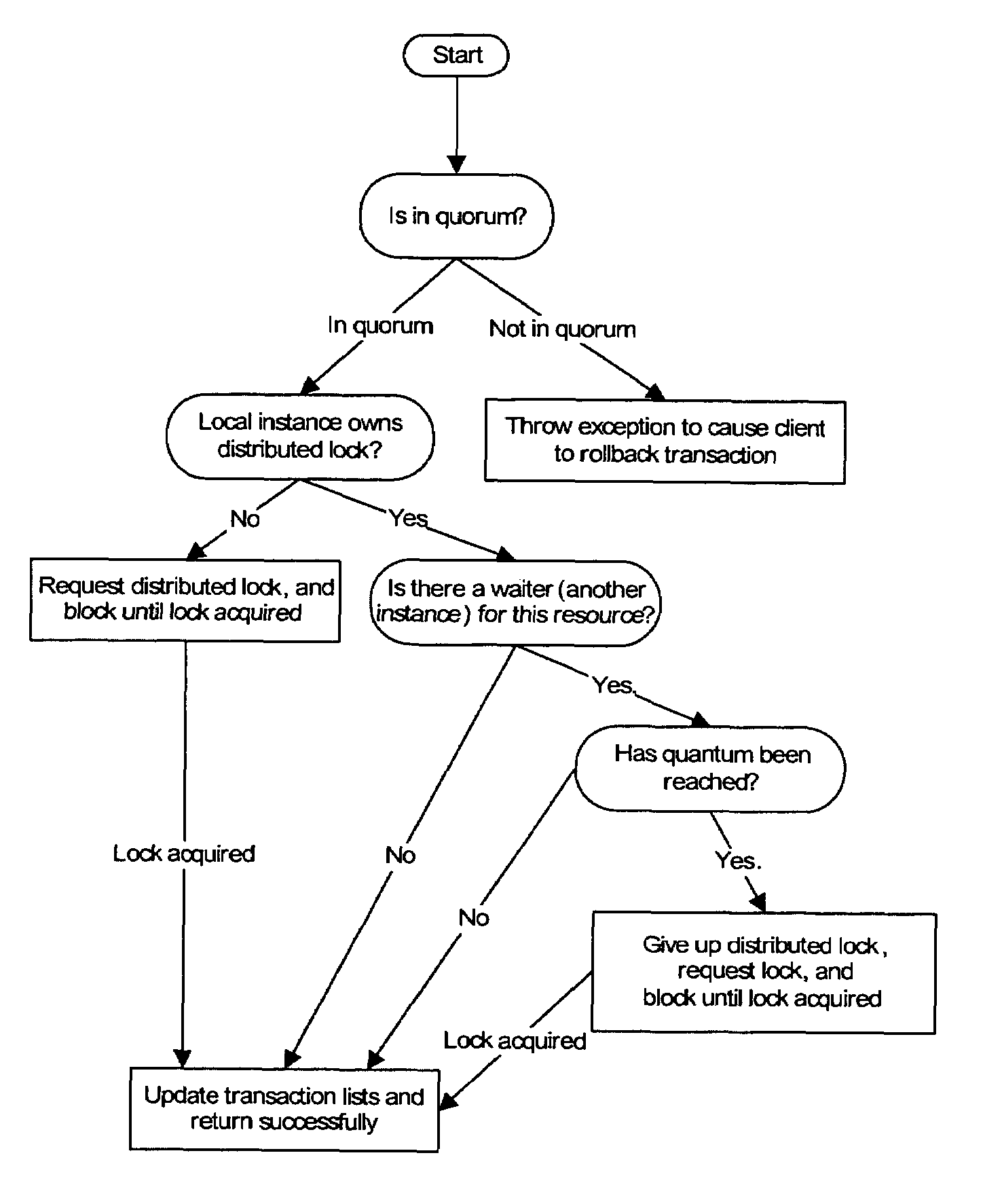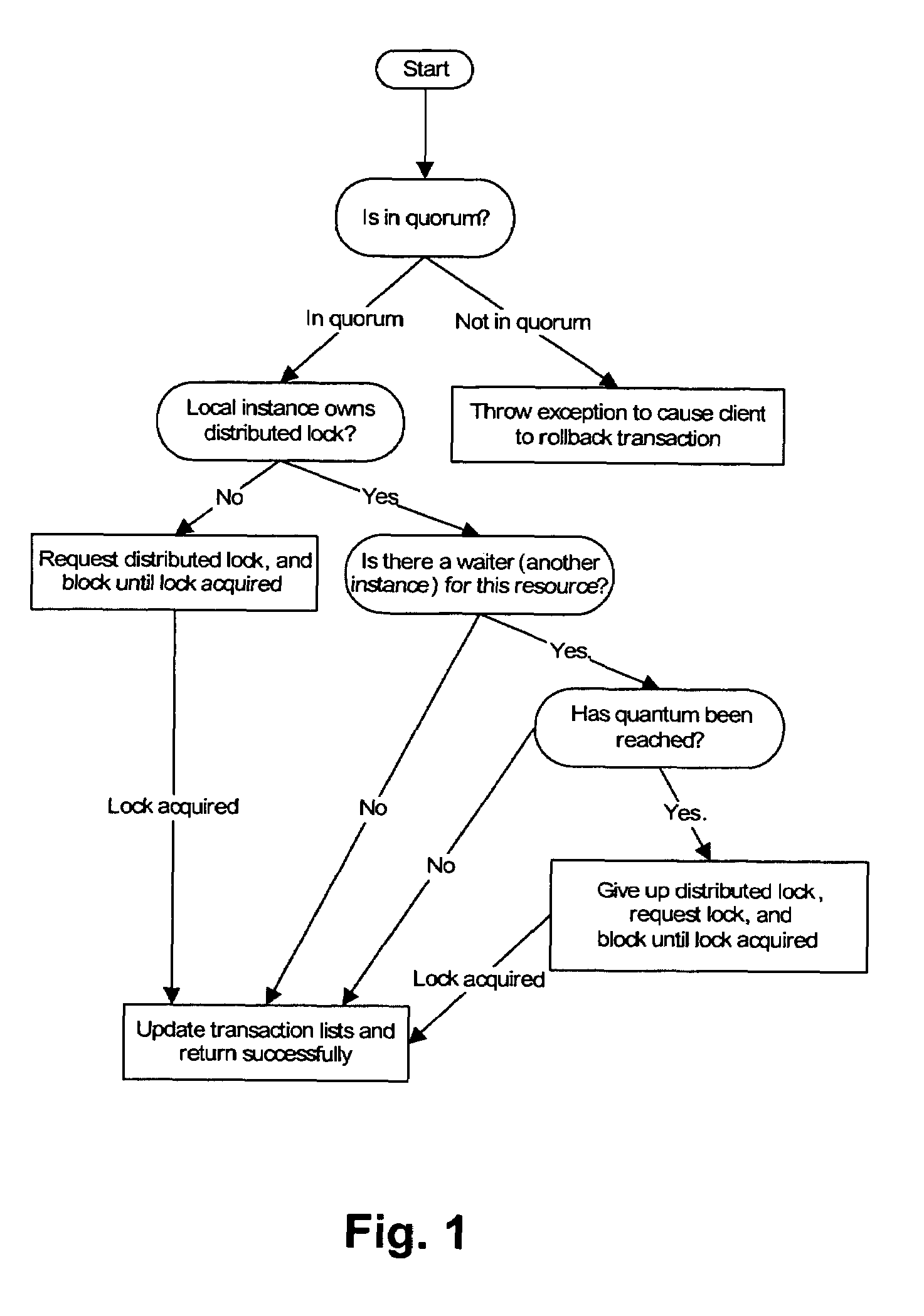Fault tolerant distributed lock management
a distributed lock and fault technology, applied in the field of distributed systems, can solve problems such as system stoppage, failure of process, and disruption of communication between certain nodes or sets of nodes
- Summary
- Abstract
- Description
- Claims
- Application Information
AI Technical Summary
Problems solved by technology
Method used
Image
Examples
Embodiment Construction
[0021]Distributed transaction and lock management techniques are disclosed that manage and regulate access to distributed data. The previously discussed issues of poor performance of lock transfer, susceptibility to network or process failure, poor scalability for resource ownership transfer, and many messages required for hierarchical lock ownership transfer can each be eliminated or otherwise improved upon by one or more embodiments of the present invention.
[0022]General Overview
[0023]An embodiment of the present invention provides self-contained design of a distributed and fault tolerant transaction and lock management system (generally referred to herein as FTDLM). The FTDLM can be implemented, for example, as a component of decision support system (DSS) replication technology. In such an implementation, the FTDLM is capable of interacting with other components of the system, as will be understood in light of this disclosure. A variant of such an implementation is disclosed here...
PUM
 Login to View More
Login to View More Abstract
Description
Claims
Application Information
 Login to View More
Login to View More - R&D
- Intellectual Property
- Life Sciences
- Materials
- Tech Scout
- Unparalleled Data Quality
- Higher Quality Content
- 60% Fewer Hallucinations
Browse by: Latest US Patents, China's latest patents, Technical Efficacy Thesaurus, Application Domain, Technology Topic, Popular Technical Reports.
© 2025 PatSnap. All rights reserved.Legal|Privacy policy|Modern Slavery Act Transparency Statement|Sitemap|About US| Contact US: help@patsnap.com



